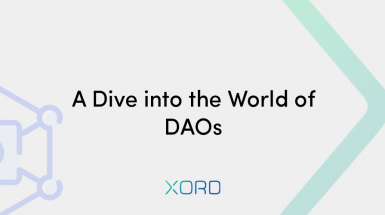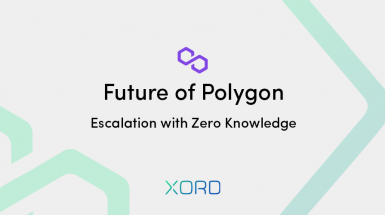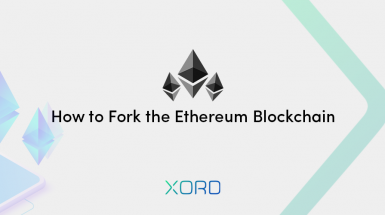What is TRON?
Justin Sun founded TRON back in 2017. It is is a Blockchain platform that aims to become a worldwide free content entertainment ecosystem, with a decentralized infrastructure for the internet. Its main focus is to expand the market of decentralized digital entertainment applications with easier creation and deployment methods. TRON protocol has become one of the largest Blockchain-based ecosystem in the world with high scalability, high throughput computing and high availability for all the dApps built in the TRON ecosystem. With TRON, digital content and application developers will not need a middleman like Netflix or Google Play Store for them to get their products out in the market. It gives more autonomy to the user by letting him publish and store his data, and own it as well. The platform takes care of the distribution and subscription of the content and forms a decentralized content entertainment system by letting the users release and share cost-effective digital content. Other than just being a decentralized content sharing platform, TRON enables developers to create a broad range of dApps and customized wallets on the TRON Blockchain. To sum up, the opportunities and possibilities of building utility applications are unlimited in TRON!
How can you use TRON?
When a digital content creator creates and deploys content on the Tron Blockchain, he receives all the payments for every view, like, share, upvote or clap directly, without the interference of a middleman or a company that deducts its profit share.
The users who want to access the content, pay for the content with the native cryptocurrency of TRON i.e Tronix (TRX), which go the producers’ accounts without any interventions.
What is Tronix?
The native cryptocurrency of TRON is Tronix (TRX). Tronix is available on exchanges like Binance and Bittrex. Every time when a block is verified by the Super Regulator in TRON Blockchain, a Tronix is mined. Or you can simply purchase them by exchanging them with other cryptocurrencies like BTC and ETH. Its isn’t possible to purchase Tronix with fiat currency, debit or credit card. You must buy Bitcoin or Ethereum with cash/ on an exchange such as Coinbase and can easily exchange them with TRON. There are a number of Tronix wallets out there that you can use to store your Tronix. Ledger Nano X&S, Trust, Cobo, Wallet.io, Exodus and Tronscan just to name a few. These wallets are divided into categories of Hardware, Android & iOS, desktop and Web, you can choose any according to your needs. In addition, TRX will cost a minimum of $40 until the end of 2020, as expected by Wall Street experts. To get a better idea of Tronix, visit TRON official.
TRON Virtual Machine
Much like Ethereum Virtual Machine, TRON has its own TRON Virtual Machine, made for the TRON ecosystem. It provides a convenient, scalable and stable custom-built blockchain system to developers worldwide. TVM supports DPoS and it can get connected to any current development ecosystem. TVM is also compatible with the EVM environment, which helps developers skip the learning a new language part and jump directly to development, debugging and compiling smart contracts using Solidity or other languages as well. All of the smart contracts made on Ethereum Virtual Machine are executable on TVM. Bandwidth is a concept in TVM, works like Gas in EVM. Bandwidth can be earned by staking TRX. It is used for normal TRX transaction and TRC10 transactions. Simply put, energy is used to interact with smart contracts. You can earn it by staking TRX. TVM comes with a lightweight architecture that reduces the consumption of resources, hence gives better system performance. Not just this, it also comes with all-in-one interfaces to help deploy and view/check smart contracts, making the process easier for the developers.
These are the interfaces available in TRON Wallet-CLI:
- deploycontract(password, contractAddress, ABI, code, data, value)
- getcontract(contractAddress)
- triggercontract(password, contractAddress, selector, data, value)
TRC10 and TRC20:
TRC10:
TRC-10 is a token standard that has TRON native Blockchain support. TRC-10 tokens are available on the mainnet of TRON since its transfer from Ethereum to its own Blockchain platform. You don’t have to have programming knowledge or TVM to create TRC10. These simple steps below can guide you on how to create TRC -10 token:
- Acquire as much as 1024 Tronix
- Visit Tronscan.org
- Create a wallet there (Hover to the upper right of the screen and click Sign In > Import a Wallet > Create Wallet)
- Now send 1024 TRX/Tronix to your Tronscan wallet
- Go back to Tronscan’s page to create TRC10 tokens and fill the items that are required, (Token Name, Token Abbreviation, Brief Introduction, Official Website, Maximum Bandwidth, Total Supply, Issuing Exchange Rate in TRX and Token Freeze)
The ease in the issuing of TRC10 tokens lessens the development cost in the end. However, TRC10 tokens are still used thoroughly in real-world projects like BitTorrent Token (BTT), a popular decentralized file-sharing application that has over 100 million users.
TRC20:
Unlike TRC10, TRC20 is a technical standard meant for smart contracts that help implement tokens with the TRON Virtual Machine. TRC20 tokens are compatible with Ethereum’s ERC-20 token standard. This makes the TRC20 tokens usable in Ethereum based smart contracts. This allows developers to send their Ethereum- based smart contracts to TRON. As TRC20 has some complexities, TRC10 are widespread in terms of usage. However, TRC20 tends to give better functionality to TRON-based tokens.
Handy Tools and Insights for Developers:
Smart Contract Language:
It is important that you have experience with Solidity programming language to write smart contracts on the TRON Blockchain. The TRON Virtual Machine is compatible with EVM environments. Hence, as a developer, you can easily create, debug and run smart contracts in a mixed environment with the smart contract programming language, Solidity.
Interfacing with Javascript:
It is essential to have experience with Javascript for interfacing with Blockchain with this tool. As a developer, you can build decentralized applications using Tron Web, such as Chrome Extensions and websites.
Command Line Experience:
In addition to all the above requirements, it is necessary to have the command-line experience to interact with and to run the apps.
Tools:
TRON Web
TRON Web connects developers with the TRON Blockchain, in the simplest words. It makes sure to give you a seamless development experience, very similar to Ethereum’s Web3 implementation. TRON offers a unique feature set with cool new development tools for integrating decentralised apps in the browser, Node.js and IoT devices. TRON Web also requires a Solidity Hub as well as a Full Hub that runs on the HTTP API. You can also utilize TRON Web to exchange, buy, freeze and unfreeze different tokens, most importantly, Tronix.
TRON Box
As a developer, you can write, deploy and debug Solidity smart contracts with TRON-Box, a development framework based on the TRON Virtual Machine. Much like Truffle in Ethereum, TRON Box is also a development and testing framework for the TRON Blockchain using TRON Virtual Machine.
TRON Grid
TRON Grid enables the developers to access essential tools to build decentralized applications on the TRON Blockchain. It uses SpringBoot to issue query interface. TRON Grid takes up Java-TRON and writes the events into MongoDB and the user is able to poll smart contract’s details. It enables developers to fabricate and deploy their dApps and smart contracts. TRON Grid provides a load-balanced and hosted API for developers, to run hub in the cloud and so you won’t have to worry about running one yourself while working with Tron. It also offers a test network, namely ‘Shasta’.
Tron Studio
TRON Studio is an IDE with an integrated TVM. It allows developers to choose which environment they might want to use for deploying their smart contracts. TRON Studio comes with an inner Full Hub that can make a private local environment for the developer to test their previously deployed smart contracts. In addition, it provides the developers with a user-friendly environment that lets the developers connect with their smart contracts made with Solidity.
After this overview, we will further dive into how TRON functions, tutorials and technical articles that will be helpful to Blockchain developers.
Want to know about more use cases of Blockchain? Talk to our Blockchain experts from Xord here and get FREE consultation.





